Despite our maritime climate, convertibles have always been good sellers in the UK. In fact, even the 4x4 scene has benefited from drop-top/removable roof variants. However, it needs to be borne in mind that lopping off the top of a hatchback, even a fairly compact example, such as the VW T-Roc, demands that extensive re-strengthening of the body-frame also takes place, which adds to the kerbweight, reduces performance potential, will harm overall efficiency and lead to an intriguing blend of shakes and rattles in later model life.
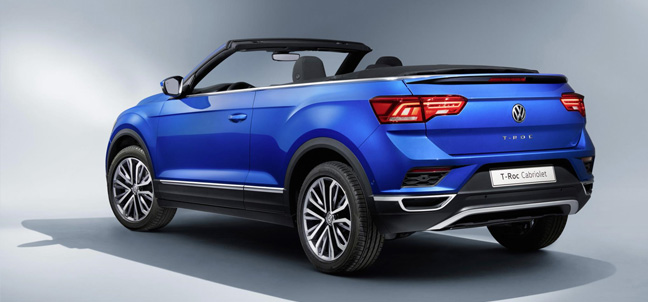
Volkswagen is highly contented that the T-Roc Cabriolet is a first-in-class and is really keen to gauge public opinion, when it debuts at this year’s Frankfurt Motor Show, September 12-22. In fact, I sincerely hope that the enhanced flexibility of which it boasts will not translate into torsional twist characteristics, as some convertible models have endured in the past.
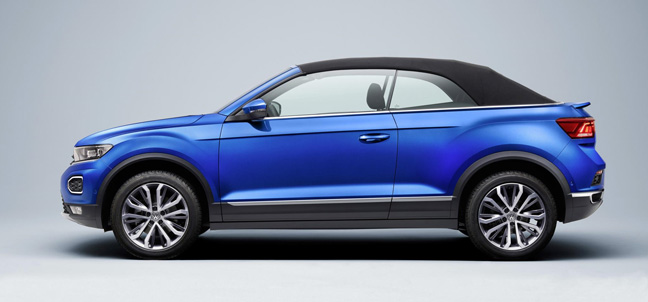
While there is no visible anti-rollover protection, whether or not the canvas roof is lowered electrically into a space above the much-restricted boot area, a pair of ‘pop-up’ bars will emerge instantly, if the safe cornering tilt angle is exceeded, which will match the much-strengthened A-pillars that support the front windscreen. Unsurprisingly, below floor and lateral strengthening has been increased to provide a passenger safety cell in the event of a compromising crash.
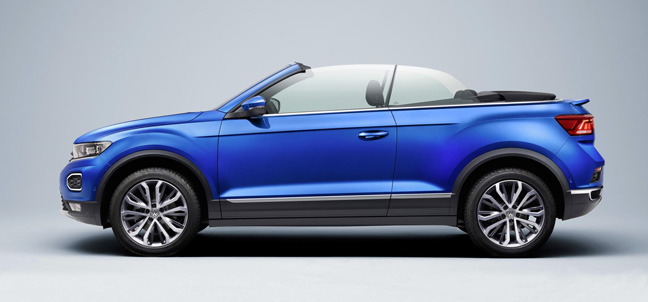
Only two trim levels will be offered when the T-Roc Cabriolet goes on sale in early-2020; Style and R-Line, both of which will be familiar to owners of existing hard-top T-Rocs. The car pictured is in Style trim, with fabric seat covers and a body-coloured plank across the dashboard. The alternative trim features sportier cross-hatched leather seats, closely akin to the finish applied to RS versions of Audi models. It is certainly a stylish proposition, regardless of trim chosen.
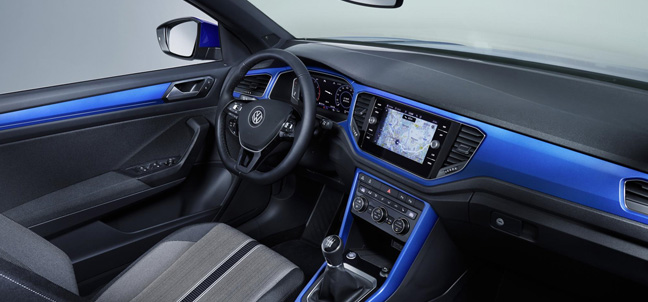
Powering the car is another VW tick-box affair, potential owners opting for the turbocharged petrol 1.0-litre, three-cylinder unit that develops a modest 112bhp, or the ubiquitous turbo-petrol, 1.5-litre four-cylinder engine that provides a zesty 147bhp. Both are front-wheel drive, using a six-speed manual gearbox, although a seven-speed, twin-clutch, automated-manual option is available on the bigger unit. No performance figures have been announced as yet but you can expect the 0-60mph benchmark to be covered in 10.0s, or 8.7s, respectively and top speeds should be close to 115-125mph, while CO2 emissions and fuel economy will be only marginally greater than the hardtop versions of the T-Roc.
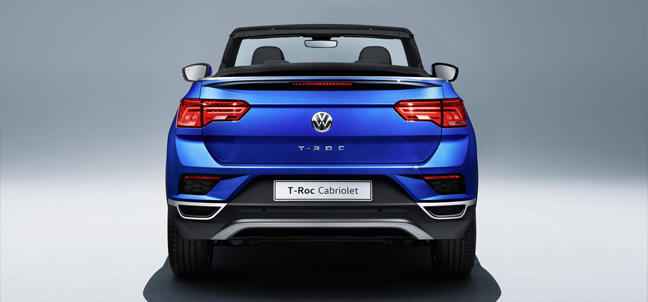
As it is a Volkswagen, you can expect that its build quality will be first-rate and that it will carry a price premium of around £3,000 over the regular hatchback model, which will start the 1.0-litre in the region of £22,900, with the top version knocking on the door of £27,000. While the handling and road-holding are sure to be well resolved, I shall reserve opinion until a proper test drive has been taken.
